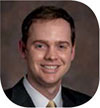Fellowship or no? That is the question that hounds ophthalmology residents from day one. Don’t let this concern consume you during your first year, when you have diverse clinical skills and knowledge to master. Undoubtedly worry will still find its way in, so here are some statistics and guidelines on the process.
Approximately 65 percent of U.S. ophthalmology residents apply for a fellowship. This percentage has nearly doubled over the last fifteen years. Consequently comprehensive ophthalmologists may become increasingly valued, particularly in certain health systems. Do not assume that you must pursue fellowship to obtain the career you want.
Residents choose to pursue fellowship for many reasons. Some choose subspecialization due to a particularly strong clinical or research interest. Others may find fellowship training of strategic value in certain practice settings, such as some urban and academic environments. Still others may select a fellowship to augment their residency training in anticipation of a career in comprehensive ophthalmology. Extended subspecialty training has costs as well–it consumes time that could otherwise be spent developing your practice, and you can intentionally or unintentionally distance yourself from aspects of comprehensive ophthalmology.
Of note, the Accreditation Council for Graduate Medical Education (ACGME) does not accredit subspecialty training within ophthalmology. This means that government funds for graduate medical education cannot be used and thus you will likely be paid less in fellowship than in residency. All clinical fellowships require a completed residency and U.S. medical license. In recent years the Association of University Professors of Ophthalmology (AUPO) has attempted to standardize curricula and education quality through their Fellowship Compliance Committee.
Numbers vary annually, but the most fellowship positions are offered in retina (in the 130s), followed by cornea (90s), glaucoma (70s), pediatrics (60s), oculoplastics (40s), and neuro-ophthalmology (20s). There are also a few positions in uveitis, ocular pathology and international ophthalmology. Surgical retina and most oculoplastics are two year fellowships, whereas the others are usually one year. In 2014, 82% of fellowship positions were filled and the average applicant applied to twenty programs.
The formal application process for most fellowships starts in June to July between the second and third years of residency. Applications are submitted during the summer and interviews typically occur between October and December. A match day similar to that of residency occurs in mid-December, and fellowship starts the following July.
Oculoplastics is an outlier in several ways. Almost all programs are accredited by the American Society of Ophthalmic Plastic and Reconstructive Surgeons (ASOPRS) and offer a more direct route to membership in that organization. Applicants typically submit their applications in the fall of the second year of residency (rather than the third), interview over the winter and match in the early spring.
So, just as you did for your residency applications, work backwards to determine when you need to make a decision on fellowship. Give yourself a couple months before the application deadline to gather recommendations and marshal all the aspects of a strong application. Prior to that, make sure your general ophthalmic education comes first. The decision to pursue or not pursue post-residency training is a significant one, but fellowship offers little without a strong foundation from residency.
* * *
 About the author: D. Wilkin Parke III, MD, is a vitreoretinal specialist with VitreoRetinal Surgery, PA, in Minneapolis. He completed his residency and surgical retina fellowship at Bascom Palmer Eye Institute in Miami. During his last year of fellowship, he was chief resident.
About the author: D. Wilkin Parke III, MD, is a vitreoretinal specialist with VitreoRetinal Surgery, PA, in Minneapolis. He completed his residency and surgical retina fellowship at Bascom Palmer Eye Institute in Miami. During his last year of fellowship, he was chief resident.